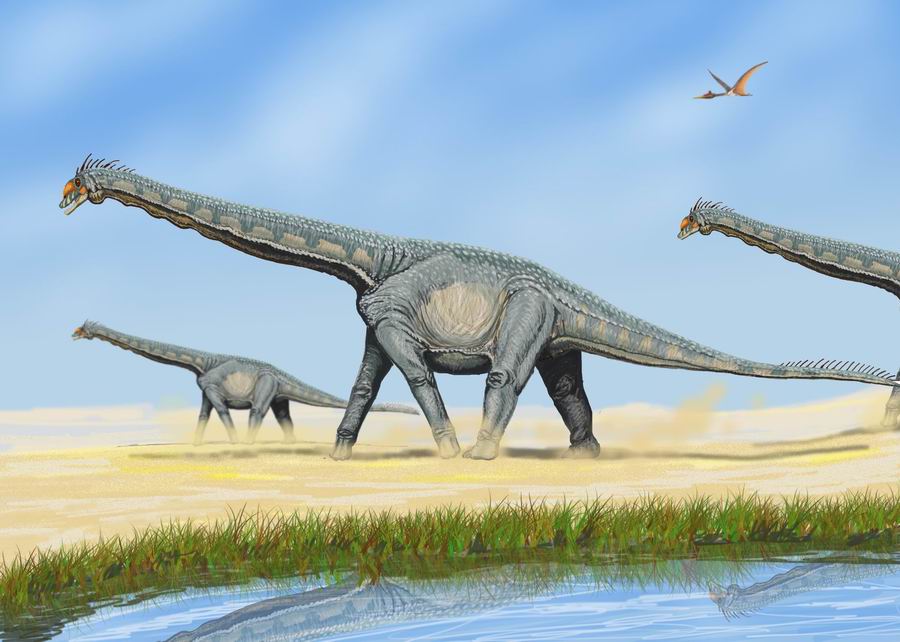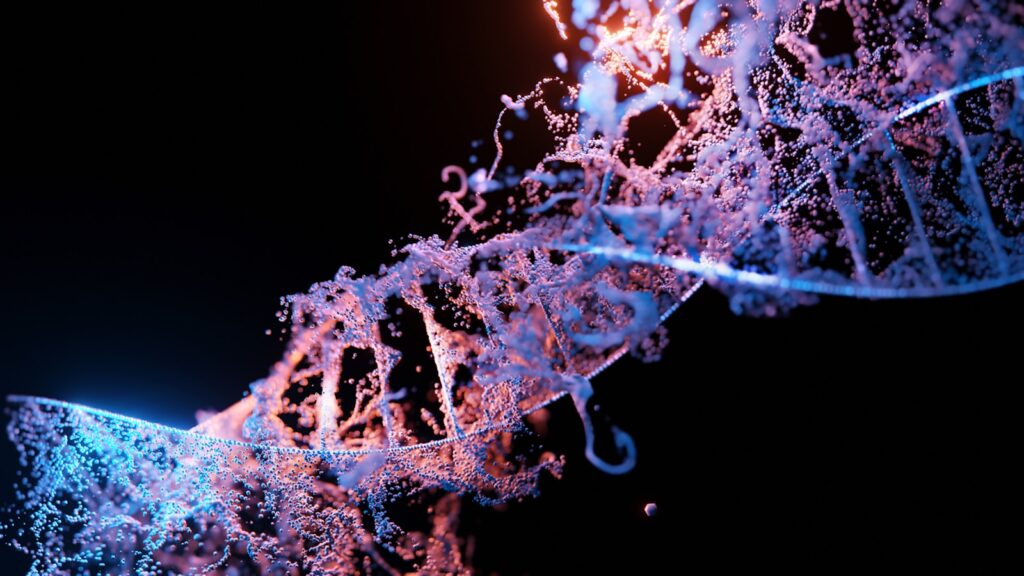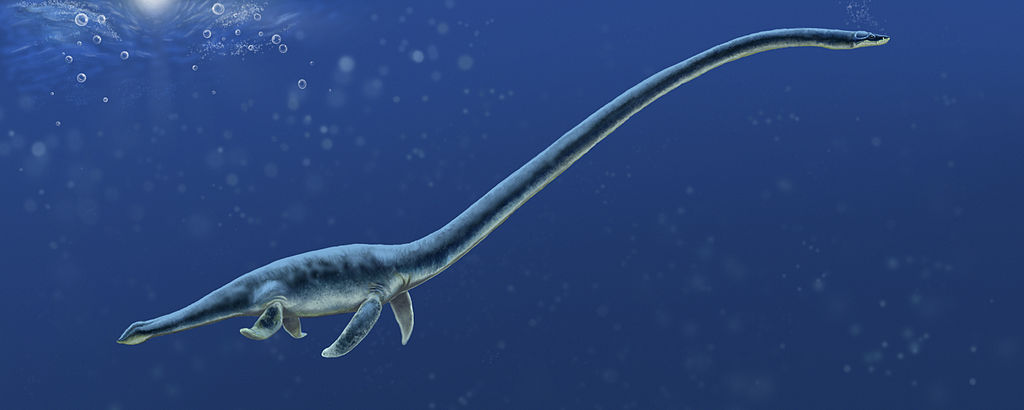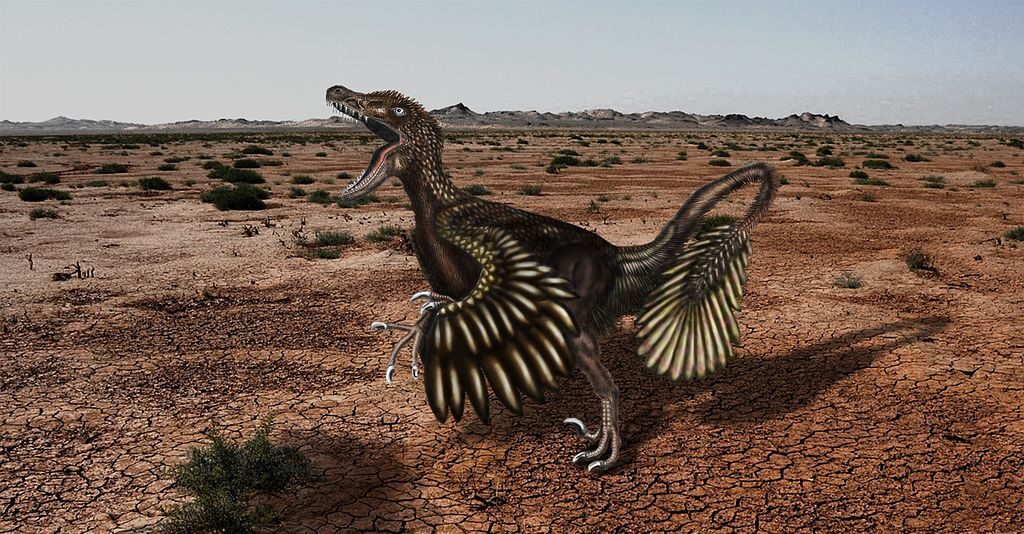The dance between plants and herbivorous dinosaurs represents one of Earth’s most fascinating evolutionary relationships. For over 165 million years, dinosaurs roamed our planet, with plant-eaters comprising a significant portion of these magnificent creatures. But these dinosaurs didn’t exist in isolation—they evolved alongside the plant kingdom, creating a remarkable co-evolutionary story. As plants developed new defensive mechanisms, herbivorous dinosaurs adapted with specialized feeding strategies and digestive systems. This intricate relationship not only shaped dinosaur evolution but also transformed Earth’s landscapes and ecosystems. From the earliest ferns to the emergence of flowering plants, plant evolution directly influenced the diversity, size, distribution, and ultimately the success of herbivorous dinosaurs across the Mesozoic Era.
The Plant World Before Dinosaurs

Before dinosaurs appeared approximately 230 million years ago, Earth’s plant communities were dramatically different from today’s landscapes. The Carboniferous period (359-299 million years ago) saw vast swampy forests dominated by primitive plants like club mosses, horsetails, and ferns, many growing to tree-like proportions. These early vascular plants lacked flowers, fruits, or nuts, instead reproducing via spores and lacking true wood. By the Permian period (299-252 million years ago), gymnosperms (non-flowering seed plants) began their ascent, including early conifers and seed ferns that offered more nutritional value than their predecessors. This plant world set the stage for the first dinosaurs, providing the initial nutritional foundation that would eventually support massive herbivores. The lack of flowering plants meant early herbivorous dinosaurs evolved to process tough, fibrous vegetation with relatively low nutritional content compared to what would evolve later.
The Rise of Gymnosperms and Sauropod Evolution

The Triassic and Jurassic periods witnessed the dominance of gymnosperms—conifers, cycads, and ginkgoes—that transformed Earth’s landscapes into vast conifer forests with understories of ferns and cycads. This plant revolution coincided with the rise of sauropods, the long-necked giants that would eventually become the largest land animals ever to walk the Earth. The high-growing conifers and cycads may have driven the evolution of sauropods’ distinctive long necks, allowing them to reach vegetation inaccessible to other herbivores. Nutritionally, gymnosperms offered more calories than earlier spore-based plants, supporting the enormous energy requirements of these massive dinosaurs. The relationship was symbiotic—sauropods likely helped disperse gymnosperm seeds across vast distances through their digestive tracts, while gymnosperms provided the caloric foundation necessary for gigantism. Fossil evidence suggests many sauropods had specialized teeth and digestive adaptations specifically suited for processing tough gymnosperm foliage.
Plant Defenses and Dinosaur Adaptations

The evolutionary arms race between plants and their herbivorous predators drove remarkable adaptations on both sides. Plants developed various physical defenses, including tough, fibrous tissues, thorns, spines, and toxic compounds, to deter consumption. In response, herbivorous dinosaurs evolved specialized feeding apparatuses—from the powerful grinding jaws of ceratopsians to the complex dental batteries of hadrosaurs that could process even the toughest plant materials. Ankylosaurs developed narrow snouts that may have allowed selective browsing, avoiding the most toxic parts of plants. Some dinosaurs likely developed detoxification systems similar to modern herbivores, enabling them to consume plants containing harmful compounds. Fossil evidence shows dinosaur gut contents occasionally containing materials known to be toxic to many modern animals, suggesting specialized digestive capabilities. This continuous cycle of adaptation and counter-adaptation drove diversity in both plant communities and dinosaur species throughout the Mesozoic Era.
The Revolutionary Impact of Flowering Plants

Perhaps the most dramatic shift in the plant-dinosaur relationship came with the emergence of angiosperms—flowering plants—during the Early Cretaceous period around 125 million years ago. These newcomers revolutionized terrestrial ecosystems with their rapid reproductive cycles, nutritional fruits, and ability to quickly colonize disturbed environments. Flowering plants provided higher-energy food sources and greater nutritional density than earlier plant groups, potentially fueling new ecological opportunities for herbivorous dinosaurs. The fossil record shows a remarkable diversification of certain dinosaur groups, particularly hadrosaurs and ceratopsians, coinciding with angiosperm radiation. Many of these dinosaurs developed increasingly sophisticated dental arrangements capable of processing the varied textures of flowering plants. The co-evolutionary relationship benefited both groups—dinosaurs gained new food sources while early flowering plants gained seed dispersal mechanisms through dinosaur digestive systems, evident from fossilized dung containing undigested seeds.
Specialized Feeding Strategies Among Herbivorous Dinosaurs

As plant communities diversified, herbivorous dinosaurs developed remarkably specialized feeding strategies to exploit different ecological niches. High browsers like sauropods and some ornithischians could reach vegetation up to 15 meters above ground level, accessing food sources unavailable to other animals. Ground-level browsers like ankylosaurs and stegosaurs consumed different vegetation layers, focusing on low-growing plants and understory species. Evidence suggests some dinosaurs were highly selective feeders—ceratopsians may have used their beaks to carefully select particular plant parts while avoiding others. Hadrosaurs, with their complex dental batteries capable of crushing, grinding, and slicing, could process multiple plant types efficiently. Isotopic analysis of fossilized teeth reveals that some dinosaur species switched diets seasonally as plant availability changed throughout the year, demonstrating remarkable dietary flexibility. These specialized strategies reduced direct competition between different dinosaur groups, allowing multiple herbivore species to coexist within the same ecosystem.
The Impact of Dinosaur Herbivory on Plant Communities
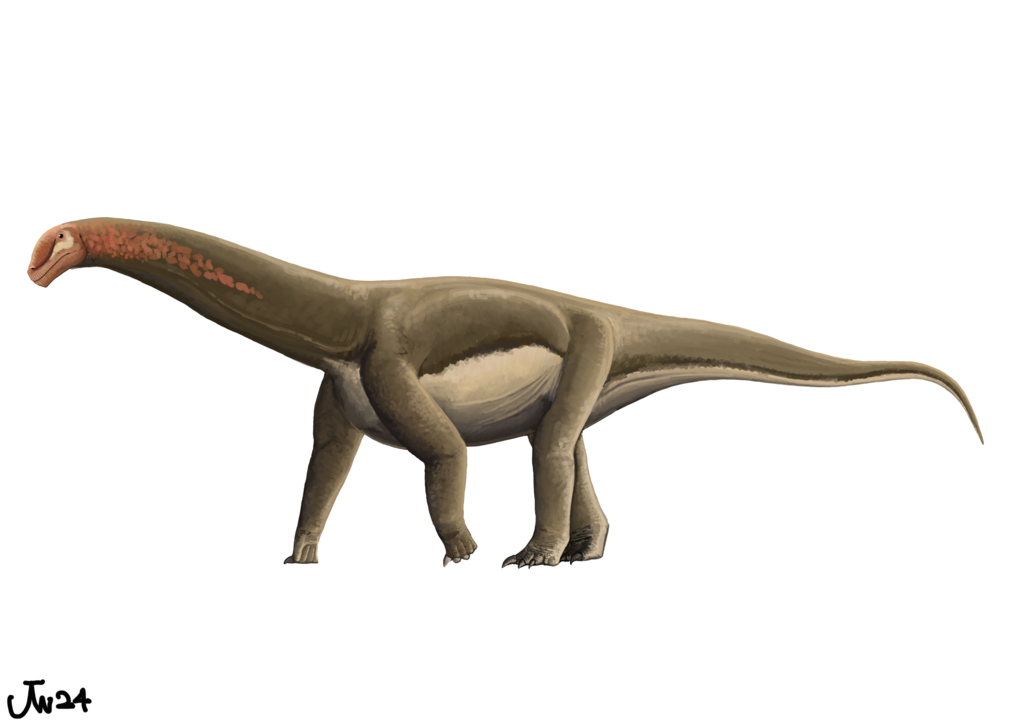
Just as plants shaped dinosaur evolution, herbivorous dinosaurs dramatically influenced plant communities through their feeding behaviors. The intense grazing pressure from dinosaurs likely selected for plants with enhanced regrowth capabilities, similar to how modern grazing mammals influence grassland composition. In some ecosystems, dinosaur browsing may have maintained open woodland structures by preventing forest canopy closure, creating patchy landscapes with diverse microhabitats. Plant fossil evidence from the Mesozoic shows morphological changes consistent with adaptations to intense herbivory, including growth patterns that allow rapid recovery after browsing damage. The physical disturbance caused by herds of massive sauropods would have created areas of disturbed soil where pioneer plant species could establish, increasing overall plant diversity. Coprolite (fossilized dung) evidence reveals dinosaurs served as important seed dispersal agents, transporting plant genetics across wide geographic areas and potentially accelerating plant speciation rates across continents.
Digestive Innovations and Gut Microbiomes

Processing plant material—especially the tough, fibrous vegetation of the Mesozoic—requires specialized digestive capabilities that herbivorous dinosaurs developed to remarkable degrees. Many herbivorous dinosaurs likely possessed specialized gut chambers for bacterial fermentation, similar to modern ruminants, allowing them to break down cellulose and other complex plant compounds. Gastroliths—stomach stones found associated with some dinosaur fossils—suggest some species used muscular gizzards to mechanically grind plant material before digestion. The largest sauropods may have had extraordinarily long digestive tracts with retention times spanning multiple days, maximizing nutrient extraction from low-quality plant materials. Recent research suggests dinosaurs hosted complex gut microbiomes composed of bacteria, archaea, and fungi that helped break down plant compounds indigestible by the dinosaurs themselves. These microbial communities would have co-evolved with their dinosaur hosts, potentially becoming increasingly specialized for processing specific plant types as both plants and dinosaurs diversified throughout the Mesozoic Era.
Geographic Variation in Plant-Dinosaur Relationships

The relationship between plants and herbivorous dinosaurs varied significantly across different geographic regions, driving unique evolutionary trajectories in isolated populations. In the northern latitudes of Laramidia (western North America), lambeosaurine hadrosaurs diversified alongside specific conifer communities adapted to cooler climates. Meanwhile, in the southern continents of Gondwana, titanosaur sauropods remained dominant herbivores longer, possibly due to the persistent abundance of gymnosperm forests in these regions. Island ecosystems drove particularly interesting adaptations—fossil evidence from European archipelagos shows some sauropods experienced island dwarfism, evolving smaller body sizes in response to limited plant resources in isolated environments. Regional variations in soil chemistry influenced plant nutritional content, potentially driving different dental adaptations among related dinosaur species. Climate-driven shifts in plant communities created dynamic patterns of dinosaur migration and local adaptation, evident from isotopic studies of fossilized teeth showing seasonal dietary changes. These geographic variations helped drive the impressive diversity of herbivorous dinosaurs across the Mesozoic world.
Environmental Change and Dinosaur-Plant Coevolution
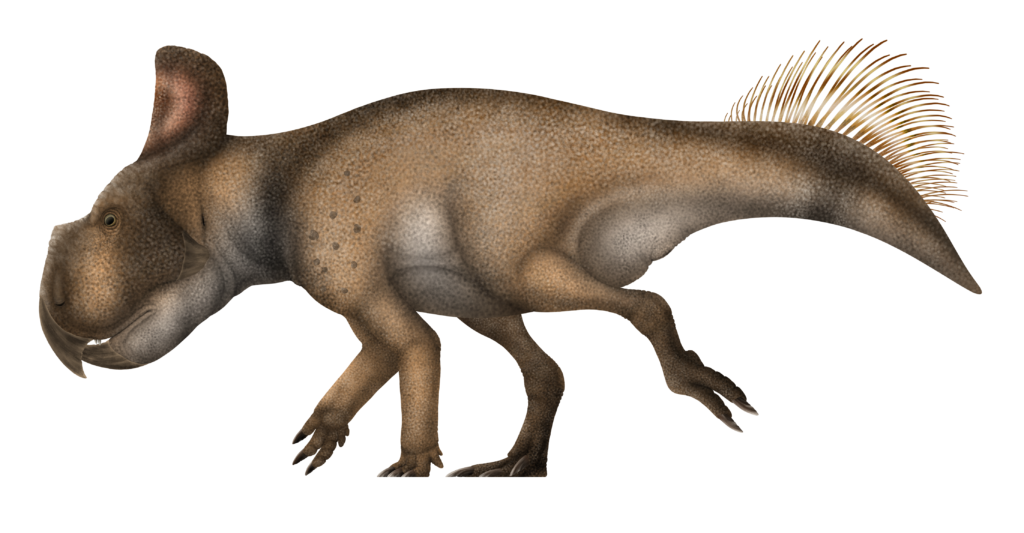
Throughout the Mesozoic Era, Earth experienced multiple periods of environmental upheaval that dramatically affected both plant communities and their dinosaur consumers. The end-Triassic extinction event (approximately 201 million years ago) eliminated many competitor herbivore groups, opening ecological niches that dinosaurs rapidly exploited. During the Jurassic, increasing atmospheric oxygen levels may have enabled the evolution of gigantism in sauropods by supporting more efficient respiratory systems while simultaneously boosting plant productivity. The mid-Cretaceous thermal maximum created warmer, more humid conditions that accelerated the spread of flowering plants, coinciding with the diversification of specialized herbivores like ceratopsians. Periods of sea level change repeatedly connected and isolated landmasses, creating opportunities for both plant and dinosaur speciation through geographic isolation. Fossil evidence suggests dinosaur communities responded to climate-driven vegetation changes by shifting their ranges or adapting their feeding strategies, demonstrating remarkable evolutionary resilience in the face of environmental challenges.
Case Study: Hadrosaurs and the Angiosperm Revolution
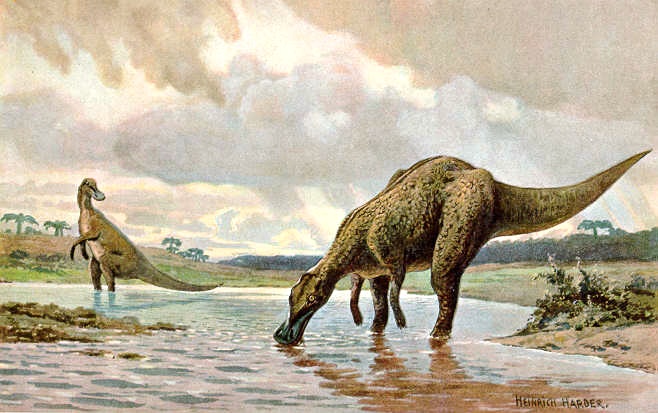
Perhaps no dinosaur group better illustrates the influence of plant evolution than hadrosaurs, the “duck-billed dinosaurs” that became incredibly diverse during the Late Cretaceous period. Their spectacular radiation coincided precisely with the expansion of flowering plants across many ecosystems, suggesting a direct evolutionary relationship. Hadrosaurs evolved the most complex dental arrangements of any dinosaur group—dental batteries containing hundreds of interlocking teeth capable of efficiently processing various plant materials from soft leaves to woody stems. Their distinctive cranial crests, which varied dramatically between species, may have evolved as visual displays to distinguish between species occupying similar ecological niches based on subtle dietary differences. Microscopic wear patterns on hadrosaur teeth reveal different feeding strategies between species—some specialized in grinding fibrous materials while others focused on softer vegetation. Coprolite analysis shows that hadrosaurs consumed diverse plant diets including angiosperms, conifers, and ferns, demonstrating remarkable dietary flexibility that likely contributed to their evolutionary success. The hadrosaur-angiosperm relationship represents one of the clearest examples of plant evolution directly driving dinosaur diversification.
The Extinction Puzzle: Plants, Dinosaurs, and the K-Pg Boundary
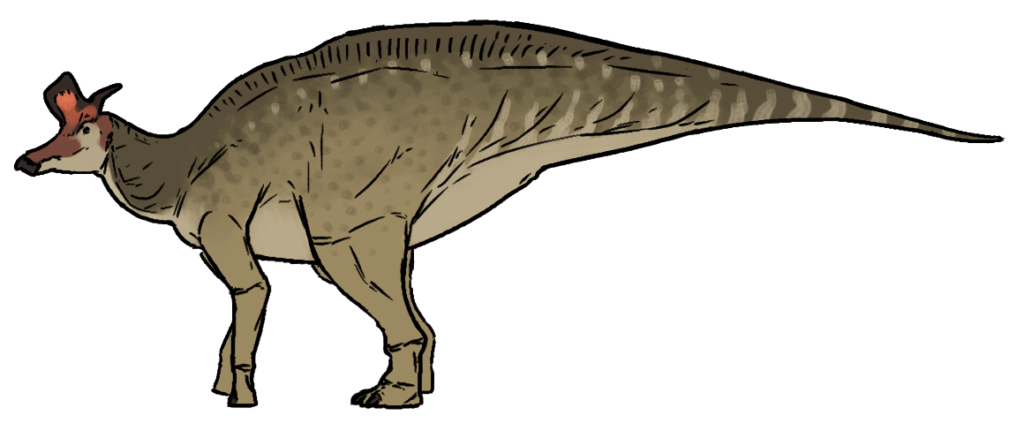
The relationship between plants and herbivorous dinosaurs came to an abrupt end with the Cretaceous-Paleogene (K-Pg) mass extinction approximately 66 million years ago. This catastrophic event, triggered by a massive asteroid impact, devastated global ecosystems through a combination of initial blast effects, widespread fires, and subsequent climate disruption. The extinction hit plant communities particularly hard, with evidence of a global “fern spike” immediately following the impact, representing the temporary dominance of ferns as pioneering species in devastated landscapes. Interestingly, many plant groups possessed evolutionary advantages that helped them survive—buried seeds, tubers, and resilient spores allowed eventual recovery, while most large herbivorous dinosaurs perished completely. The differential extinction pattern suggests that the collapse of plant productivity, even temporarily, was particularly devastating for large-bodied herbivores with high caloric requirements. Some evidence indicates certain herbivorous dinosaur lineages were already declining before the impact, possibly due to ongoing changes in plant communities during the latest Cretaceous. The extinction’s aftermath saw mammals eventually filling abandoned herbivore niches, developing their unique relationships with the recovered and evolving plant kingdom.
Modern Insights: What Living Relatives Reveal

While dinosaurs disappeared 66 million years ago (excluding birds), their living relatives—birds and crocodilians—provide valuable insights into dinosaur-plant relationships. Modern bird digestive systems, particularly in herbivorous species like parrots and hoatzins, offer clues about potential dinosaur digestive adaptations, including specialized crop structures and fermentation chambers. Crocodilians possess surprisingly complex digestive capabilities despite being primarily carnivorous today, suggesting their distant relatives may have had similar physiological foundations adaptable to plant consumption. Plant materials preserved alongside dinosaur fossils can now be analyzed at the molecular level, revealing specific plant compounds that dinosaurs encountered and potentially developed adaptations to process. Microscopic analysis of coprolites using new techniques has identified specific plant species and parts consumed by various dinosaur groups. Studies of modern megaherbivores like elephants demonstrate how large body size influences plant-herbivore relationships, potentially paralleling dynamics in dinosaur communities. These multiple lines of evidence, combining paleontological findings with insights from living animals, continue to enhance our understanding of how plant evolution shaped herbivorous dinosaur communities throughout the Mesozoic Era.
Conclusion

The 165-million-year relationship between plants and herbivorous dinosaurs represents one of Earth’s most remarkable evolutionary partnerships. As plants developed increasingly sophisticated adaptations—from the tough, fibrous tissues of early gymnosperms to the nutritionally rich fruits of flowering plants—dinosaurs responded with remarkable specializations in feeding apparatus, digestive systems, and ecological behaviors. This co-evolutionary dance transformed both groups while reshaping entire ecosystems. The story of plant-dinosaur interactions reminds us that no species evolves in isolation; rather, the continuous feedback between species drives the complex and fascinating patterns of life on Earth. Though this particular evolutionary relationship ended with the K-Pg extinction event, its legacy lives on in our understanding of evolutionary processes and in the plant world that survived to support the mammalian radiation that would eventually lead to our species.

